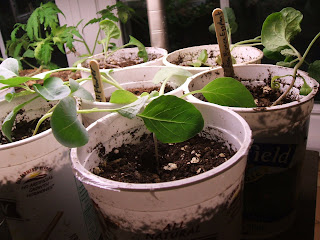























It is blowing like crazy out there tonight! 40 mile gusts! And today I went with a group of women homesteaders to the top of
Audrey Hacker is the real deal (and her whole family is too)! They raise their animals in a way that is both deeply intuitive and scientifically precise. On this windy mountaintop it is very difficult to grow vegetables because of the drought conditions, much dryer than surrounding lowlands with significantly less rainfall. They do, however, raise or hunt all their own meat. Their freezer is currently full of venison, pork, and beef and chicken from their farm.
Their beautiful, healthy, completely free-range herd of goats exude a joyful goat-ness. The small flock of chickens keeps the hay bedding where the goats sleep at night in the barn fluffed up and free of parasites. Audrey practices rotational grazing, with each animal either correcting an issue left behind by the previous (ie consuming parasites) or reaping the benefits of an improvement made by previous animals, or being on the other end of either of those transactions for the following species.
Audrey demonstrated and gave detail on making a mineral mix for goats to compensate for the lack of copper, trace minerals, salt, and minerals in general in
She has a practical, down-to-earth attitude about things such as chicken breeds - use the breeds that are bred for high meat production, rather than heritage breeds which have been of necessity selected for higher egg laying because of the mathematics of operating a hatchery, so therefore meatiness is really hard to find in heritage breeds. However, when the Cornish Cross (the typical hybrid we see in grocery stores) are fed on healthy feed, as well as pasture containing not only a wide variety of greens, but also insects and seeds for protein, fresh air (not ammoniated chicken house air) exercise, and adequate space, they do not suffer the same issues such as heart attack (sometimes called "flip") and broken legs as hybrid birds do when confined, and provide a nice large delicious carcass with high quality meat on the bones.
We were also enlightened about the existence of two great resources:
http://www.nrcs.usda.gov/
and http://www.acresusa.com/magazines/magazine.htm
We hope to go back soon and work on projects like lacto-fermenting vegetables, pressure canning, processing chickens, and trimming goats' hooves.

.Friday April 8th
Planted cold weather crops (a little late but it is still cool here – well, typical drastic variations in weather – hot one day then cold the next):
Spinach (4 varieties)
Redbor kale
Mesclun
Claytonia - AKA miner’s lettuce – a succulent, delicious wild edible that I was introduced to and devoured in salads when I was at the California School of Herbal Studies
Mâché
More peas where peas didn't germinate interplanted with Gilfeather turnips - a delicacy which originated in
http://www.slowfoodusa.org/index.php/programs/ark_product_detail/gilfeather_turnip/
And a story about the Gilfeather Festival:
http://www.theheartofnewengland.com/travel/vt/turnip-festival.html
Monday 4/11 The Gaia herbs echinacea that I striated in the freezer in a plastic bag with peat moss germinated!
Planted 40 in small peat pots covered with a thin layer of soil. Growing echinacea feels like the fulfillment of many years of planning and dreaming. By growing our medicine I will be creating a level of self-sufficiency for my family’s health that is very liberating and empowering. The plants take several years to mature so it is also another long-term commitment to the land and the homestead, like the fruit trees. I am not generally a patient person but this I can do!
Tuesday April 12 transplanted peppers (Yolo Wonder), tomatoes (
Mold on outside of peat pots from lack of air flow. Removed and discarded peat pots. Apparently this is normal/common, but I found dissenting opinions on whether or not it is detrimental to the plants so I erred on the side of caution.
Transplanted cabbage (Red Acre and Late Flat Dutch) and the Lemon-lime basil that Rose picked out. Thinned the basil and had a tiny delicious treat!
I transplanted the Red Acre cabbage into larger pots, but there were extras left over so I decided as an experiment to plant them in a bed that has excess phosphorous and potassium and see how they do (and if the chickens eat them!) I’ll keep you posted on the results.